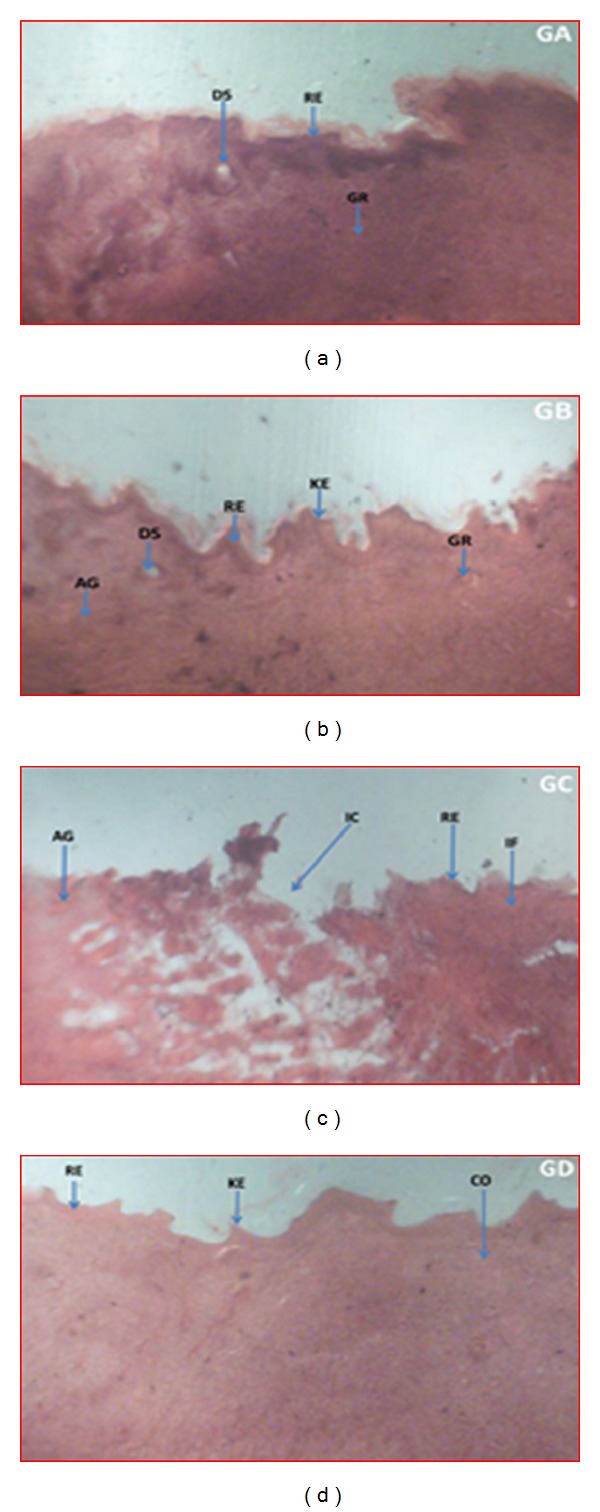Figure 6.

Histopathological examination of wound tissues treated with vehicle, extracts and the untreated tissues. Representative images stained with hematoxylin and eosin stain, Van Gieson's stain, and toluidine blue stain treated daily with 7.5% w/w creams of methanol leaf extracts of J. flava (JFL) (a) and L. welwitschii (LWL) (b) and the untreated wound tissues (c) for 14 days. (a) JFL: marked granulation tissue formation and angiogenesis with evidence of apoptosis due tissue necrosis. Complete wound resulted from increased collagenation and reepithelialisation. (b) LWL: enhanced collagenation and granulation tissue formation, evident of enhanced reepithelialisation and rate of healing, manifesting as uneven scaring. (c) Untreated wound tissues with persistent inflammation with incomplete wound area, evident of poor granulation tissue formation, collagenation, and reepithelialization but profuse angiogenesis. (d) Treated wound tissues (with 1% w/w silver sulphadiazine) having rapid granulation tissue formation and collagenation, evident of enhanced wound healing and uneven keratinous wound surface evident reepithelialization. AG: angiogenesis, CO: collagenation, DS: dead space following necrosis, GR: granulation tissue following apoptosis, IC: incomplete wound area, IF: inflamed tissue, KE: keratinous epithelium, ND: necrotic debris of persistent inflammation and RE: Reepithelialisation.
